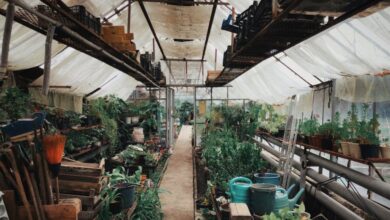What Are the Best Tools for Aerating Garden Soil
Aerating garden soil is essential for maintaining a healthy and vibrant garden. It allows air, water, and nutrients to penetrate deep into the soil, promoting root growth and overall plant health. However, choosing the right tool for aeration can make a significant difference in the effectiveness of the process. Various tools are available, each designed for specific needs and garden sizes. Here’s a look at some of the best tools for aerating garden soil.
Manual Aerators
For smaller gardens or flower beds, manual aerators are an excellent choice. These tools come in various forms, including hand-held spike aerators and core aerators.
A hand-held spike aerator features a long handle with spikes that penetrate the soil as you walk across your garden. This tool is perfect for creating small holes that allow air and moisture to reach deeper levels of soil. The simplicity of a spike aerator makes it easy to use, but it may not be as effective for compacted soil.
Core aerators, on the other hand, remove plugs of soil to create larger holes. This method enhances aeration significantly, making it ideal for lawns or heavily compacted areas. Core aerators come in both manual and motorized versions. The manual version typically resembles a large fork, while the motorized variant can quickly cover larger areas, saving time and effort.
Aeration Shoes
Aeration shoes are a unique and innovative solution for soil aeration. These shoes come with spikes on the soles, allowing you to aerate the soil simply by walking around your garden. While they may not be as effective as core aerators or spike aerators, they are a fun and easy way to incorporate aeration into your gardening routine.
Using aeration shoes can be a great workout while tending to your garden. However, keep in mind that they are best suited for light aeration and may not be ideal for heavily compacted soil.
Power Aerators
For larger gardens or lawns, power aerators are the way to go. These machines can cover vast areas quickly and efficiently. Power aerators are available in various sizes, from walk-behind models to ride-on versions for even larger spaces.
Most power aerators utilize a core aeration technique, removing plugs of soil from the ground as they move. This method not only aerates the soil but also helps to break up compacted areas, making it an excellent choice for stressed lawns.
When selecting a power aerator, consider the size of your garden and your budget. Renting a power aerator may be a cost-effective option for one-time use, especially if you have a large area to cover.
Garden Forks
Sometimes, the simplest tools are the most effective. A garden fork can serve as an excellent aeration tool, especially for smaller garden beds or areas. By manually pushing the tines of the fork into the soil and rocking it back and forth, you can create space for air and nutrients to penetrate.
This method is labor-intensive and requires more effort than other aeration tools, but it allows you to focus on specific areas that may need extra attention. Additionally, using a garden fork gives you a chance to assess the soil condition, making it a beneficial multi-purpose tool.
Choosing the Right Tool
Selecting the right aeration tool depends on several factors, including the size of your garden, the type of soil, and your physical capabilities. For small areas, manual tools or garden forks may suffice. Larger gardens will benefit from power aerators or core aerators.
Consider the current condition of your soil as well. If it’s heavily compacted, investing in a power aerator or core aerator is advisable. In contrast, if you’re maintaining soil health, aerating shoes or manual options may be more than adequate.
Maximizing Aeration Benefits
To maximize the benefits of aeration, timing is crucial. Aerate your garden during the growing season, ideally in the spring or fall when the soil is moist but not saturated. This approach ensures that the aeration process is effective and promotes healthy plant growth.
Incorporating organic matter, such as compost, after aeration can further enhance soil health. The combination of aeration and organic amendments will provide your plants with a nutrient-rich environment, leading to flourishing gardens.
By understanding the best tools for aerating garden soil and knowing when to use them, you can create an optimal growing environment that supports robust plant growth and a thriving garden.







